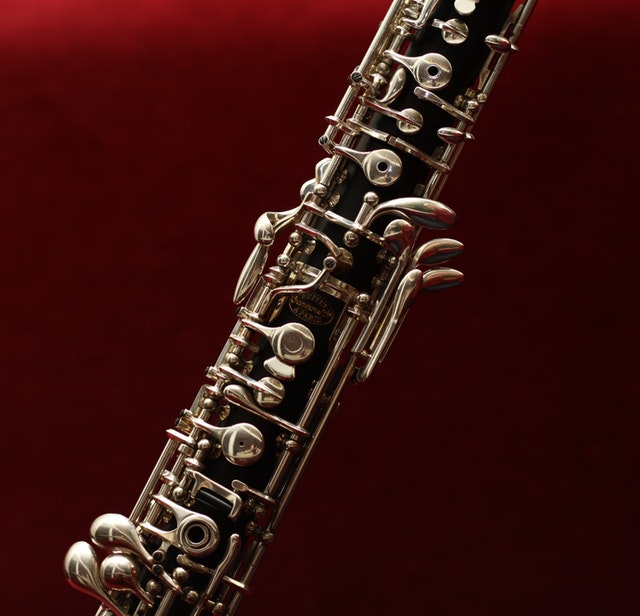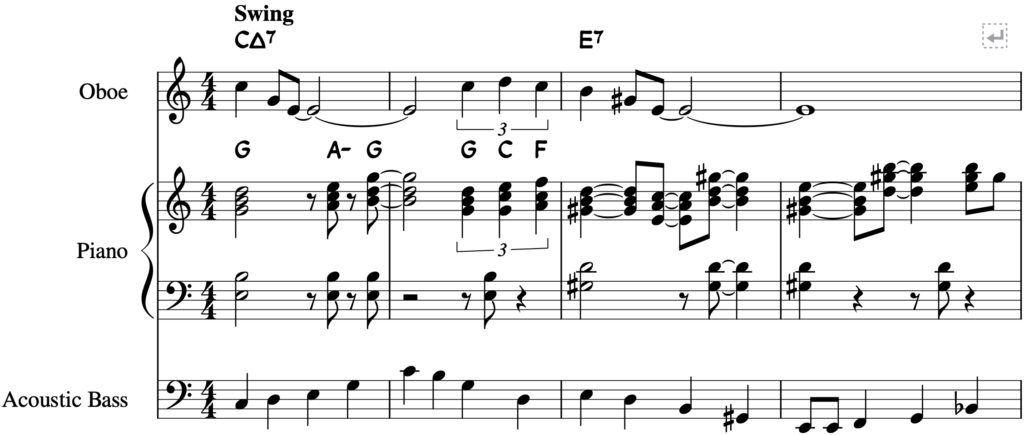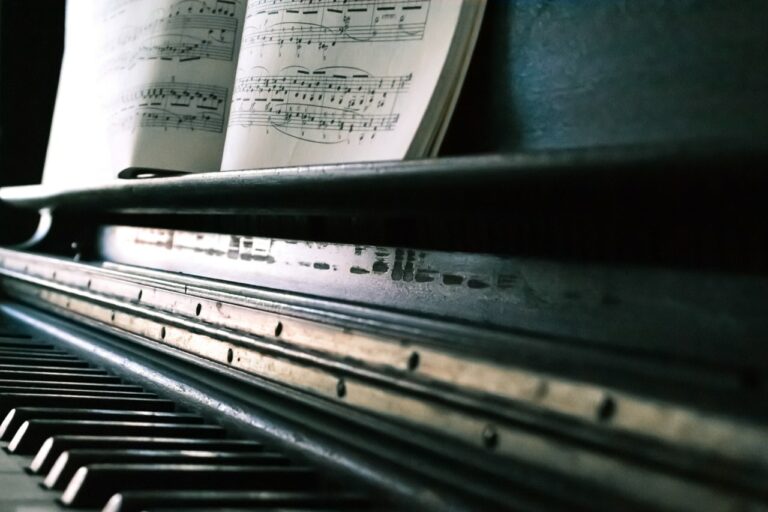Hey everyone, I think you will find this article very exciting. The goal of this post is to take the bland and basic chords of a song and to turn them into super nice voicings and variations. It will take your songs from sounding good to sounding absolutely fantastic and professional.
To get your songs at that level, we will be using voicing techniques which I will teach you as clearly as I can.
We will then turn those voicings into Upper Structure Triads so they can be used in a transparent way on your music sheets every time you prepare a new song in your repertoire.
At first glance, it seems very complicated, but with the right knowledge in your head, it is all very logical and systematic.
I can try to give you a definition of what Upper Structure Triads are.
It is a way to think about chords, scales and all the tensions that come with those, in a simplified way. It is a lot easier to think about two chords, for example, the C major triad in the left hand and the G major triad in the right hand than it is to think about C major 9. Even though the combined notes of C major triad and G major triad are exactly the same as C major 9.
To explain voicings and upper structure triads in detail, we will be harmonising a song together. We’ll be looking at the very famous jazz standard written by Gerald Marks and Seymour Simon back in 1931: All Of Me.
You can download the basic version and the analyzed version as a PDF here:
– All Of Me – Basic chords and melody
– All Of Me – Harmonic Analysis
The Goal of this Tutorial
Now it is our goal to get this bland sounding basic version here:
And turn it into this slightly contrived and probably a little over-architected version because I wanted to cram it full of examples… But I hope you will get the overall picture of what you can do with the techniques I am about to teach you:
Make Room For Voicings
We have to make room for the voicings that we want to play. Or in other words, open up the playing field for our tensions to be placed so they can get the chance to really shine.
If the left hand is playing too many notes, typically in the lower regions and wave frequencies, you will notice that it is difficult for your ears to distinguish or separate the different sounds. The smaller the intervals that you play in the lower frequency ranges, the more jumbled things start to sound.
From Cluster To Shell Chords
The most important notes in a chord are those that define the character of the chord. In most cases, it is enough to play:
- the root note which names the chord
- the third interval which defines the character (minor or major)
- the seventh interval which determines dominance
In case of a piano playing as a band member, we want to give the root note to the bass player. Bass players really like root notes, they thrive on them. 🙂
Lovely, so on the piano, all we need to play in our left hand are the third and seventh note.
We thin out the cluster that is typically 1 – 3 – 5 – 7 to only be 3 – 7. This creates a lot of space for our right hand to go bananas.
Not to forget that this also makes the part which the left hand is playing, a lot simpler on a technical level. This gives the right hand the ability to take those bananas and turn them into a banana-split with sprinkles on top!
Clustered Chords Example
I am sure you will all agree that between this version with clustered chords in the left hand:

Shell Chords Example
And this version with shell chords in the left hand, there is a lot less chance of your fingers getting tied up in a knot.


Scale, chord, arpeggio and cadence studies in all major and minor keys presented in a convenient two-page format.
Putting the Focus on Comping

For this lesson, I thought it would be better to hand over the melody of the song to a melodic instrument.
I could have opted to make the melody the top note of my voicings, but with All Of Me, the melody is often using the chord notes which I think almost pushes us into using the more traditional voicings.
Maybe I should also note that we usually make sure we don’t drown out the melody during comping. However, I wanted to showcase upper structures also as a way to spice up your solos. So if you are thinking that at times I am going way overboard, you would be absolutely correct!
I kept the melody in because I felt it important to hold on to the character of the song. That way you will know at all times where you are with reference to the melody. But I wasn’t careful about drowning out the melody, I just did what I felt like.
Building With Third Intervals
As the first technique to build some nice sounding upper structure triads is by continuing to stack third intervals on top of the given chord. Hold on to your shorts guys and let’s have some fun!
One Chord at a Time
- We know from the harmonic analysis that this is a C Ionian scale.
- We also know that the only other mode that has a Cmaj7 as root is the C Lydian scale.
- The Ionian and Lydian scales are very similar in nature; the only difference being the #11.
We can, therefore, have a look at how to build upper structure triads for Cmaj7 in both Ionian and Lydian mode.
Ionian Mode Upper Structure Triads
I would like to note that the Ionian Mode Upper Structure Triads are mainly used in a suspended colour because of the flat 9 interval between 3 and 11. Most often you will see that piano players prefer to use the Lydian mode instead. Those upper structures tend to be more agreeable to our ears. Jump ahead here if you like.
Maj7 chords have a formula: 1 – 3 – 5 – 7
These represent stacks of third intervals: 1 to 3 is a major third, 3 to 5 is a minor third and 5 to 7 is a major third.
We can keep stacking third intervals on top until we get back to the root note: 1 – 3 – 5 – 7 – 9 – 11 – 13 – 1
As we can see, this exposes our tensions 9, 11 & 13 spread out with at least a third interval from the previous note.
Let’s take a look at our chord Cmaj7.
The notes in that formula look like this: C – E – G – B – D – F – A – C


The Jazz Theory Book explains all information any Jazz student needs in an easy-to-understand, yet thorough, manner.
The Jazz Piano Book on the other hand is more like a compendium of Jazz Piano. It has all information but it does not teach, rather it is great for refreshing your memory in a super concise way.
Both are must have books for any Jazz Pianist!
Click on the images to be taken to Amazon.com
What we will do now is identify all triads in this sequence that include tensions. I will illustrate that with a picture:

One more thing to notice is that the interval between 3 and 11 is a flat 9. Under very specific circumstances a flat 9 can work, but in most cases, it is perceived as too dissonant. The way to fix that is to rather play Cmaj7 sus4.
G over C major 7
Let’s start off with the G major triad.
It introduced the D as tension and the combined sound of C major 7 with G major therefore produces the:
C major 9 as the resulting chord.
B diminished over C major 7
Now we have a look at the B diminished triad.
It introduces D and F, respectively the 9 and 11. The combined sound of C major 7 with B diminished produces:
C major 11 as the resulting chord.
This chord is quite dissonant and not often used., but we can still have a listen. 🙂
B diminished over C major 7 sus 4
Because the previous upper structure example has a very dissonant sound, many piano players will rather substitute the C major 7 with a suspended version: C major 11 sus 4.
Here’s what that sounds like:
D minor over C major 7
The D minor introduces D, F and A, which are respectively the 9, 11 and 13.
The combined sound will therefore produce:
C major 13 as the resulting chord.
As with C major 11, C major 13 also holds the 11 and so sounds very dissonant. Let’s have a listen to it:
D minor over C major 7 sus 4
Because the previous upper structure example has a very dissonant sound, many piano players will rather substitute the C major 7 with a suspended version: C major 13 sus 4.
And that sounds like:
F major over C major 7 and C major 7 sus 4
This chord doesn’t introduce anything extra to our base chords. It does have an 11 and a 13, but those were already introduced by the D minor chord. So as far as sound colour is concerned, it sounds very similar to D minor. You are free to use it as it gives you the option to have a C as the top note of voicing in your C major 13 sus 4
Making The Chords Generic
We could say that for Ionian Mode root chords, the upper structures are:
V major, VII diminished and IX minor
Always taking into account that VII diminished and XI minor will often need the root chord to be played as a suspended fourth chord to avoid the flat 9 interval between degrees 3 and 11.
Lydian Mode Upper Structure Triads
Ok after Ionian’s quite dissonant upper structure triads, we will now do the same for the Lydian mode and hopefully, I will be able to let you hear why this mode is usually preferred by piano players when playing upper structures.
Maj7 chords still have the formula: 1 – 3 – 5 – 7
Then we keep stacking those Lydian numbers and end up with: 1 – 3 – 5 – 7 – 9 – #11 – 13 – 1
For Cmaj7 in Lydian mode that turns into C – E – G – B – D – F# – A – C.
Once again we identify all triads that introduce a new tension in our sequence.

G over C major 7
The only Upper Structure Triad that didn’t change is the G major and it still sounds pretty sweet, resulting in the C major 9 chord:
B minor over C major 7
The combination of C major 7 and the B minor results in a sweet-sounding C major 7 #11.
D over C major 7
Another sweet-sounding combo. Playing C major 7 and D major results in C major 13 #11.
You notice that these voicings sound a lot less dissonant and can really colour your music in different tones.
We could say that for Lydian Mode root chords, the upper structures are:
V major, VII minor and IX major
Using the Theory in All Of Me
Hope you boys and girls are still with me so far?
All of that theory that we just saw is obviously just a means to an end; we want to make our music sound good and jazzy. So that is what I tried to do next:
First Two Measures

The first two measures can be used in the C Ionian mode as we discovered in our Harmonic Analysis. And even though we are quite free to venture off into the Lydian mode if we so choose I chose to stick to the Ionian mode just for fun.
If you look at the right hand of the piano you’ll see I used the G major a lot because it produces that sweet major 9 effect that sounds really nice.
I also used an A minor which we didn’t discuss in our upper structures. This is because A minor is not really considered to be a different chord. It is the sixth degree of the C major scale and when played with a C in the bass it produces the sound and feel of the C6 chord. With that in mind, you do have an extra upper structure triad that you can use.
I got away with using the F major in spite of the dangerous dissonant behaviour. There is no other instrument playing an E in that arrangement so the flat 9 is not present. Also, it is a pretty fast chord that is used to pass over to the E7. Remember that the F major, in this case, is an alternative to the D minor as it adds the same tensions to the colour.
Next Steps
Pfew, that was quite a bit of information to plough through!
Very glad you saw it through until the end of the first part of this series. I know it is a lot to take in, but knowing this theory will take you a step closer into becoming a professional modern piano player in any style.
We only did the first two measures of the song, so there is a long way to go still. In the next section, however, we will be covering a lot more ground because there are a lot of secondary dominant chords that we can handle in one go.
Part 2 of this series will therefore conveniently cover dominant and secondary dominant chords with their upper structures. Keep an eye out for when it is published.
As always if you have any questions, suggestions or other comments, please feel free to write them down in the comments section below.
My number one recommendation to learn the piano in a fun and hassle-free manner is a program called Flowkey. Go try it out for free ► https://go.flowkey.com/pianowalk


11 Comments
This is great. I did all my theory exams as a kid and never had these explained so clearly. It is a lot to take in but the examples are really helpful. Thanks for such an informative piece.
Thanks, Laura,
Glad you enjoyed the article. I hope it helps a lot of students out there that are cramming for their exams!
Have a lovely day,
Tom
Hi, I enjoyed reading your article on The Piano Walk. There’s a lot of helpful and interesting information about the Piano.
I think the jazz piano is so beautiful and relaxing to listen to. I could listen to piano music and get lost in the world for a moment.
Best Wishes,
Margaret
Thanks, Margaret,
Nothing beats a good relaxing song with a nice glass of wine or sometimes a brandy!
Enjoy the festive season,
Tom
Dear Tom
Thank you very much for your fantastic website. It is amazing that you show people where to start and what steps to take towards their proper understanding of piano and music and their value for everyone. I hope more people will know about your website and follow your guidance.
Kind regards,
Andrey
Hi Andrey,
Thanks for the huge compliment!
I will keep trying my very best, there is still soo much to write about 🙂
Seasonal Greetings,
Tom
Hi Tom,
Really nice web site and article, especially that you have added the tutorials that you can listen and follow.
I think I will suggest this website to my friends.
Keep up the good work.
Andy
Thank you Andrea!
By all means, I will welcome them with open arms 🙂
Cheers!
Tom
Hello Tom
Under “Making The Chords Generic” you write, “Always taking into account that VI diminished and VII minor will often need the root chord to be played as a suspended fourth chord to avoid the flat 9 interval between degrees 3 and 11.”
Should it instead read, VII diminished (vii°) not “VI diminished”, and IX minor (ix) not “VII minor”?
Anthony
Hey Antony,
Well spotted! And thank you for reading the article with so much eye for detail!
I have updated my error.
Cheers!
Tom
You’re welcome.
I look forward to reading the sequel 😉
Anthony